|
Roofing Advice Page Updated 5 / 2025 |
|
|
Company Profile |
|
Gutter Replacement |
|
No-clog Options |
|
Custom Fabrication |
|
Chimney Flashing |
|
Roofing & Skylights |
|
Business Equipment |
.

.
Bookmarks
What kind of roofing issues am I likely to encounter? |
||||||||||
|
What's My Hammer? (what sort of bias do I have on this issue) This should always be the first thing you ask yourself when looking for advice.
This also helps deal with the landfill issue by minimizing the need for reroofing. There are ways to get a 100-year roof cover. It may take some extra initial investment, but when you add up the cost of all the labor to reroof 4 or 5 times, it is better to pay for better materials at the beginning, or what ever stage you are at. As long as it is installed right. Sadly, you're literally 99% likely to get ripped off by your Roofer, and have a voided warranty right off the start of your new roof cover, without this dilligent effort to make sure they do their job right with adequate materials. Beyond just what shingle you choose. If only it were that simple. As a hands-on Gutter Contractor since 1993 I have crawled up on thousands of roofs, and have yet to see evidence of a decent Roofer. Yes, it really is that bad. I can prove why in plain logic and evidence. I have written here below advice about roofing to help curb this awful trend. I know you would rather not have to research and study these issues about these details of roof covers. Shouldn't you be able to just trust your Roofing Professional? Although, that's simply is not the case. I could write a whole book on this subject, but I have tried my best to pair this down as much as possible. If you don't read this over carfully and print out the check list at the bottom to use religeously while interviewing roofing contractors, the joke is on you. Most do not discover this web page until they are already entrenched in a conflict with their roofer, which is a bit too late to do much good and the stress is now quite unbearible. That is what I hope to help you avoid, but few seem to have what it takes to properly research and stand their ground. They fear pissing off their roofer by being a difficult client, but we will not change this industry if we keep letting them get away with this sort of criminal activity. You would do well to go over the check list at bottom of this webpage of mine very carefully before signing a contract with a Roofer, or you are very likely to get shoddy work done with inferior parts, which will void your warranty by the use of cheap fasteners and steel roof flashing. This is a huge problem not just locally here in the Northwest, but Nationally. I have found much if this problem is an intentional deception to side-step warranty issues with this intetional fraud by making it near impossible for Roofers to get a rust free fasteners and flashing. Which in turn has also become a huge factor in the polution of this hazardous waste, because of premature roof failure as result. I mean this in the most litteral sense. After a contractor had reroofed with these very expensive shingles, they had covered this rusty steel flashing with a flat roofing material to hide it, instead of replacing it. I have seen hundreds of fritening stories like this: After replacing that rusty steel with copper: Roofing work has been detrimentally shaped over the last several decades due to the fact that there has been no inspection process required of Roofers and are only required to provide a 1 year warranty. In order to get them to comply with your contract you will need to hire an independent advocate to make sure they do it right. They are not required to file for an inspection permit for reroofing work, which is largely why this type of work has become such a huge problem, since they have no over-sight system implimented. Like they do have for plumbing and electrical work. They've literally been able to get away with murder for over half a century. I am not exaggerating here. Think of how many have died from an electcal fire caused by a leak. Then there is the deaths from long-term exposure to that hazardous waste and such. There are very important concepts to consider regarding any roofing material and how it is installed. Although, try to keep in mind it is the roof flashing that is designed fail first; since there is no warranty on the flashing used. Any metal used on a roof that can attract a magnet is just cheap steel and will rust out well before the lowest life roofing warranty had expired. How does your roof measure up? Test your flashing with a magnet. There is over 95% chance it is just steel and you will likely see some visible rust stains. Another problem factor you face is how most Homeowners have not been willing to pay what it cost for better materials like copper flashing, but aluminum would not actually cost hardly any more than steel flashing. It is odd to see how these days we will easily agree to spend $30k to $60k on a new car with much higher intrest fees and rapid depreciation than any house purchase. Also, willing to pay another $3k to $6k on accessories for it, before we've driven it off the lot. Yet we are not willing to spend even $1k more on a much better roof system, that could last 2X longer. You have to wonder why that seems so much harder to do than spending so much more on a few added accessories for your ride, which would not really make any difference to that car's performance or longevity? Yet, covering the investment you've made in your house gets so terribly neglected. Although, you have a far better chance to retain it's value than your car's resale value just a few years in, which will depreciate by half it's value before you have it paid off. The latest fad in homes is to drop $10k to $25k on solid rock counter tops in your kitchen and bathrooms. Although, that's often way too much to spend on a decent roof cover? Which has driven the roofing market to such dire substandard levels to make roofing work more affordable and still highly profitable for those Roofing Contractors. (also, consider copper clad counter tops for 10X lower infectious diease transfer) Here is a list of what any roof cover has to be able to accomplish:
1.
Look Good
(but not draw too much attention):
2. Durable Material: This is because of horribly low ethical standards of all roofing manufacturers and most Roofers, taking advantage of their Clients who do not know the difference. Improperly installed or rusty steel flashing is clearly the #1 issue of roof failure, which is the reason whole metal roofs are a TERRIBLE investment, since most of them are just painted steel! Wood shake roofs are also terribly fragile and dangerous for workers to be up there to clean or repair your roof, as well as highly flammable. A decent rust free metal flashing to use on your roof will not attract a magnet at all, so it is important to test the flashing they will use before it goes up on your roof. If it does stick to a magnet you must stand your ground to insist they use different flashing, no matter what they say or delays this may cause. Think of the landfill issues this shoddy parts cause from all the premature reroofing that is done each year. I cannot stress enough how imperative this flashing issue is!
3. Designed to allow for Expansion
& Contraction:
4. Hide the Fasteners: On most every roof I've been on I see exposed rusty nails within as little as 3 years after the new roofing was applied. If there has to be an exposed fastener it should be no less than a high grade stainless steel screw with a rubber sealing washer to hold constant pressure and maintain the seal. This type of screw will not attract a magnet, so test them before they are put on your roof. Just because they say it's stainless steel does not make it stainless steel, since magical thinking is a bad practice. Most Roofers would not even know where to buy stainless steel screws, so that should tell you something about how serious this issue is.
5. Increase the Insulation Rating: The old roofing should be stripped off. New plywood will need to be added over the Styrofoam to attach the new roofing onto. Also, for a nominal cost 2X2s and 2X4 boards at the plywood seams can be added to provide an air gap above and or below the Styrofoam to allow even more insulation and reduce possible condensation issues. These boards are a good way to gently fasten down the Styrofoam before the plywood gets put over them, so they do not get blown off the roof. I highly recommend deck screws for this. No nails!
6. Flammability Issues:
7. Is it 'Green': Another important issue these days is how well can solar panels be attached over that roofing material? In most cases, too much debris collection under them, moss growth, and possible leaks from those supports working loose over time, which requires the need for constant maintenance, which adds to the deterioration of the roof from that extra traffic up there and the cleaning process used. As this becomes more and more of a relevant issue, since they now have more affordable solar options and even solar roofing material to use that you should look into: https://www.tesla.com/solar |


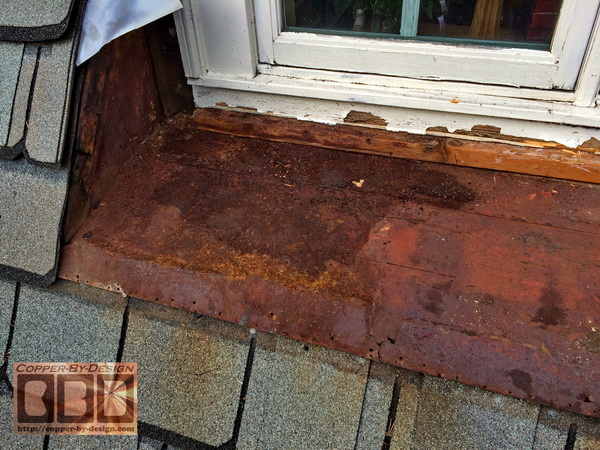

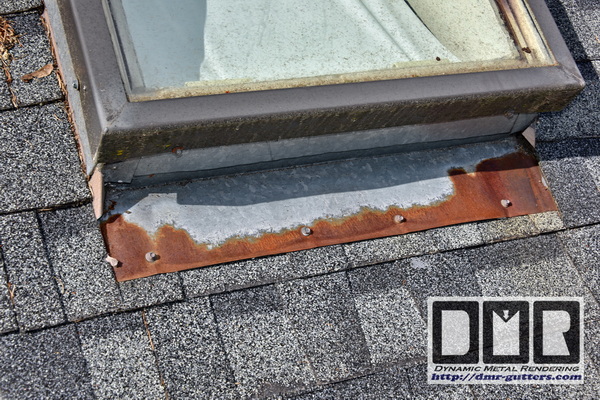
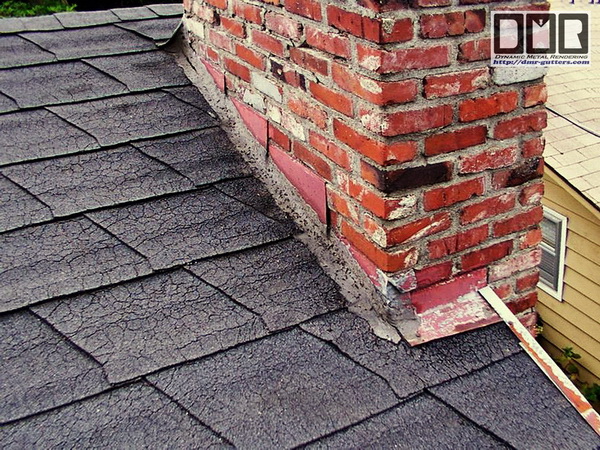

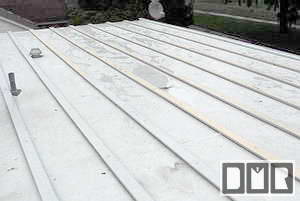
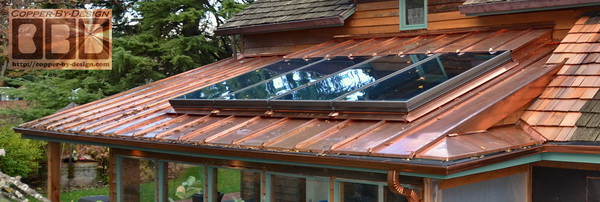

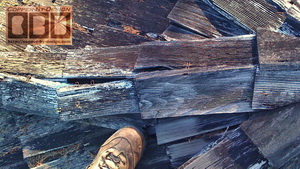
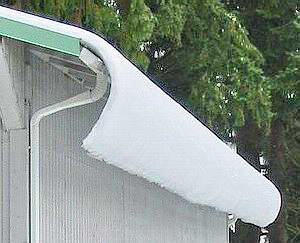
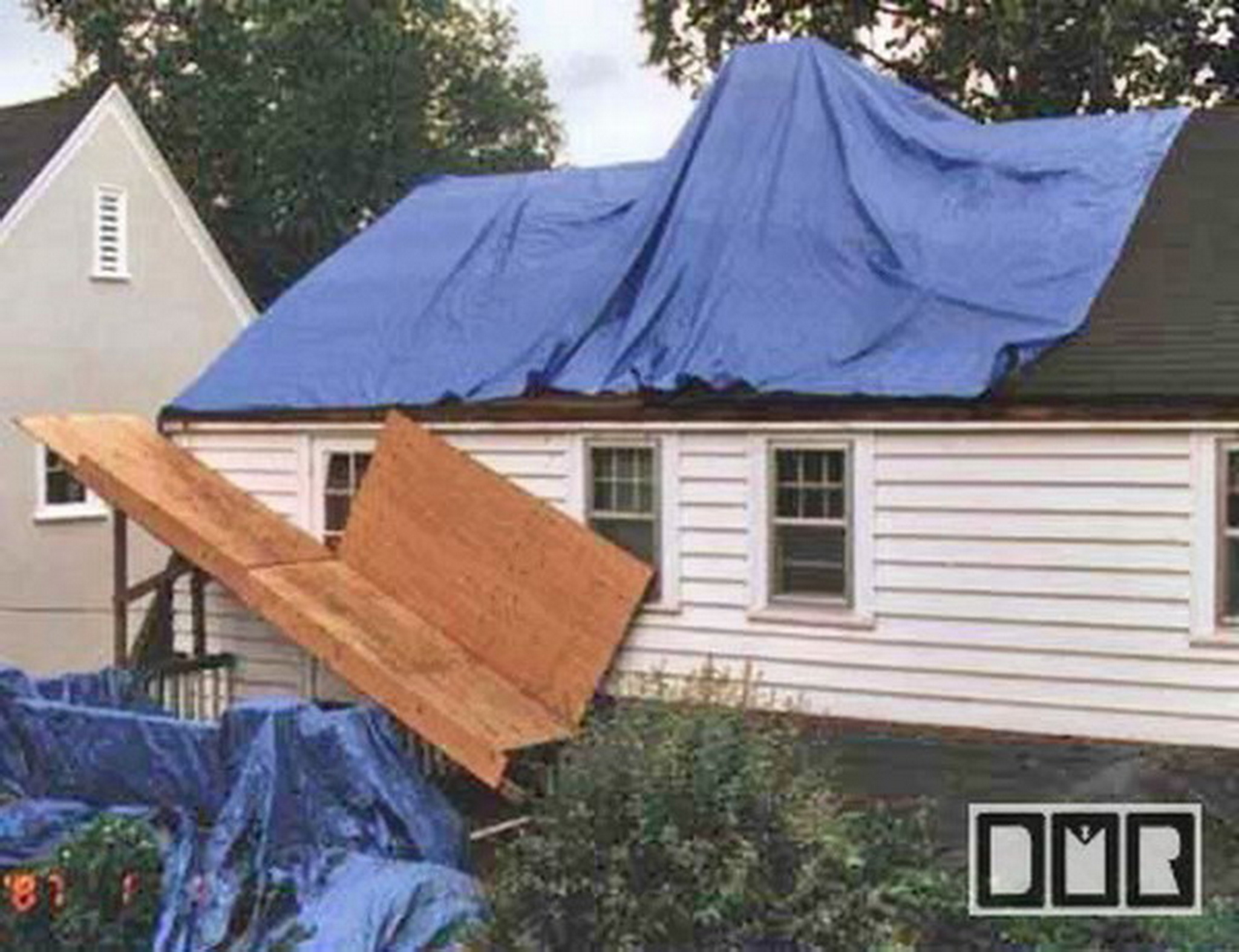 This
photo shows a three-layer tear off down to the skip sheeting boards I did back in 1996.
It also shows the tarps I bought new for each job. Instead of just
using the cheap black plastic rolls most Contractors use. You should make
sure they
cover the roof each night; rain or shine. As you know, the weather can
change on a dime here in the Great North-West. The weather can
completely change in an
hour or less regardless what the Weatherman said. It also demonstrates the care I went through to
protect their home and property. I built this shoot over the back balcony to divert the debris
off to the side.
This
photo shows a three-layer tear off down to the skip sheeting boards I did back in 1996.
It also shows the tarps I bought new for each job. Instead of just
using the cheap black plastic rolls most Contractors use. You should make
sure they
cover the roof each night; rain or shine. As you know, the weather can
change on a dime here in the Great North-West. The weather can
completely change in an
hour or less regardless what the Weatherman said. It also demonstrates the care I went through to
protect their home and property. I built this shoot over the back balcony to divert the debris
off to the side.
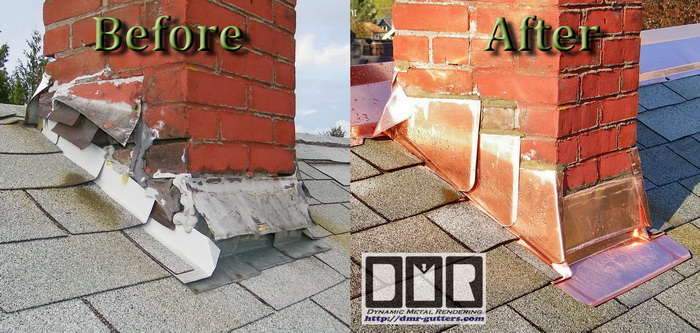
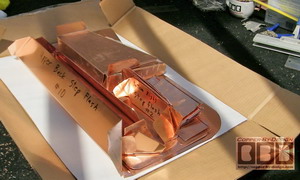
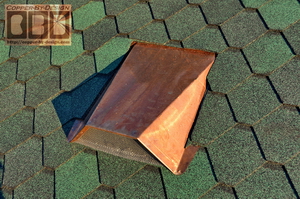

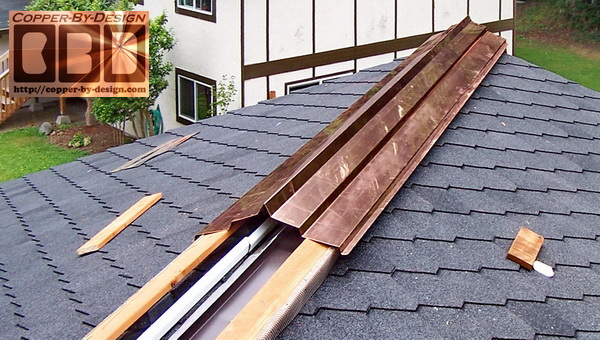

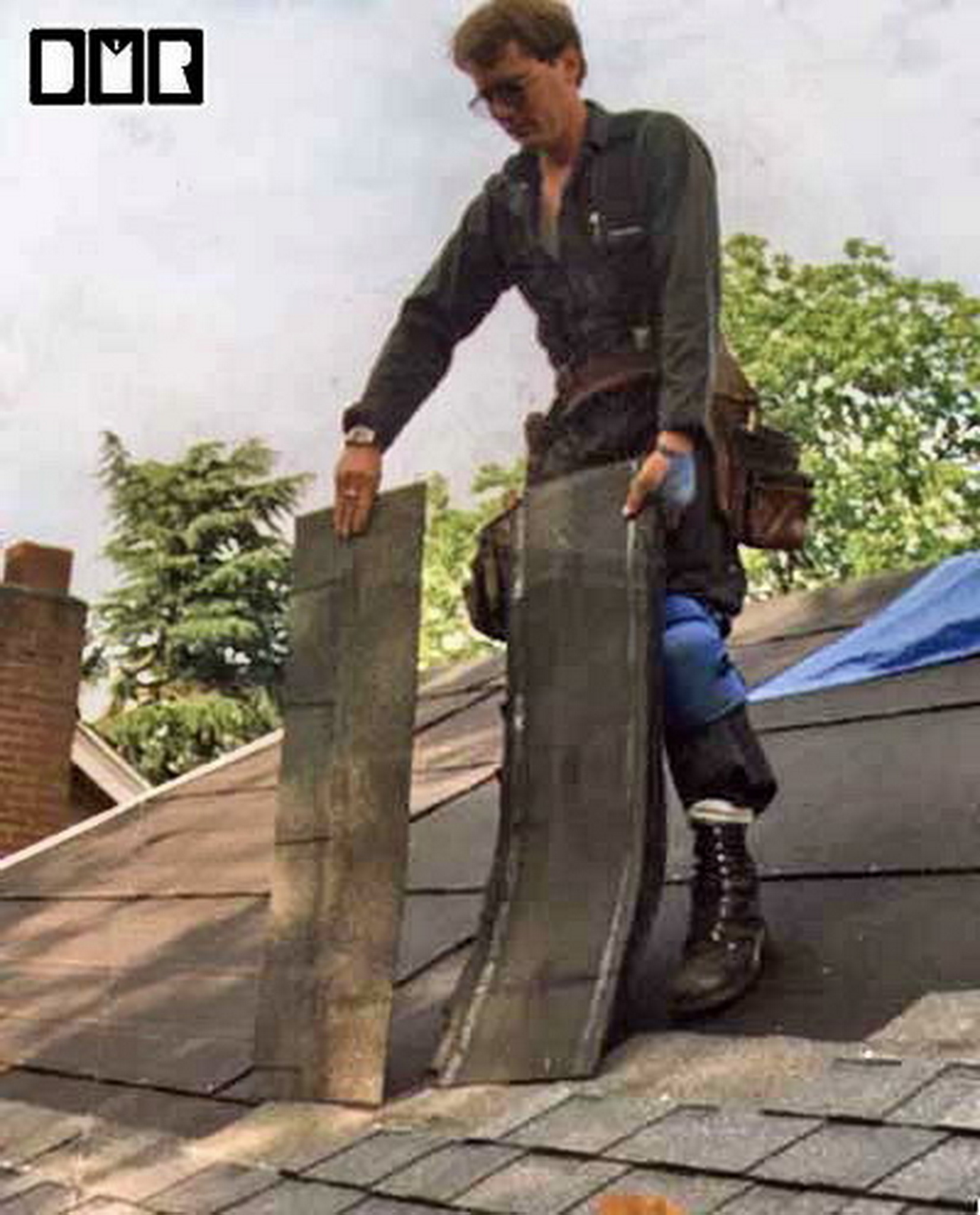 Behind me
in this photo taken back in the late 90's you'll see the 30# double
thickness roofing felt I'm standing on just above the
new roofing shingles. It's purpose is just to be a vapor barrier, but
it can protect the roof temporarily before all the roofing material is
installed, as long as it has not been compromised. It is best not to be exposed to the Sun longer than 4 to 6
months, and will get torn off the roof in a mild wind storm if just stapled
down like most Roofers will do.
Behind me
in this photo taken back in the late 90's you'll see the 30# double
thickness roofing felt I'm standing on just above the
new roofing shingles. It's purpose is just to be a vapor barrier, but
it can protect the roof temporarily before all the roofing material is
installed, as long as it has not been compromised. It is best not to be exposed to the Sun longer than 4 to 6
months, and will get torn off the roof in a mild wind storm if just stapled
down like most Roofers will do. They do not make aluminum nails for the power
nailers, but they do sell them in stainless steel for them. This option should only
add around $200 - $300 to your cost, but it's well worth it! The shingles only over-laps the nail head by 1/2" or so. When I have torn off a roof it tells a story. I've seen how most of the nails
were rusty.
They do not make aluminum nails for the power
nailers, but they do sell them in stainless steel for them. This option should only
add around $200 - $300 to your cost, but it's well worth it! The shingles only over-laps the nail head by 1/2" or so. When I have torn off a roof it tells a story. I've seen how most of the nails
were rusty. A
few roofers will use a pneumatic 'coil nailer', which is a little better and will not
void the manufacturer's warranty, but most Roofing Contractors will not buy them
for their installers to use. It is because the loads are a little more
expensive, and they will have to reload a little more often.
A
few roofers will use a pneumatic 'coil nailer', which is a little better and will not
void the manufacturer's warranty, but most Roofing Contractors will not buy them
for their installers to use. It is because the loads are a little more
expensive, and they will have to reload a little more often.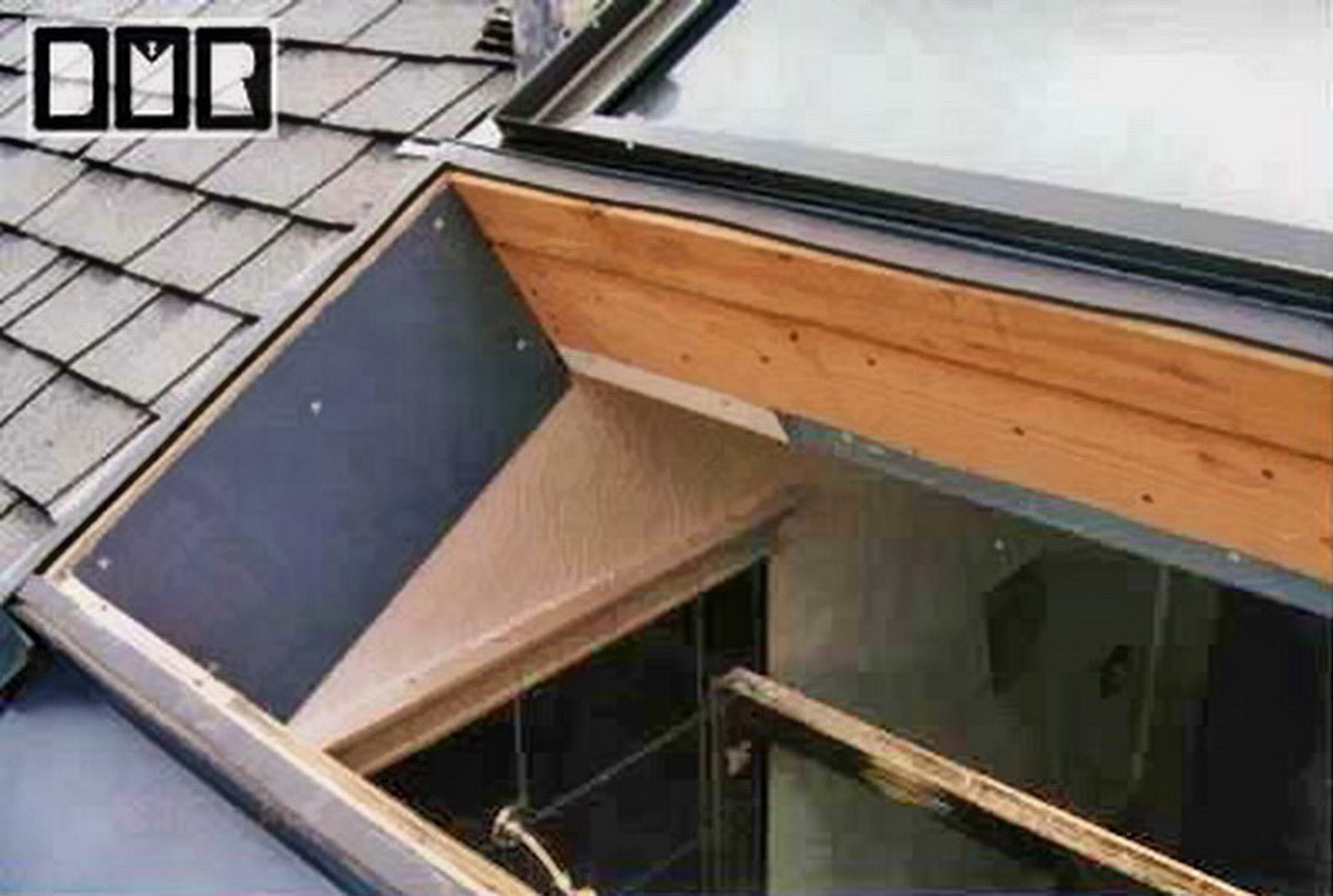 This was a difficult project where they wanted
a skylight over their Jacuzzi tub, so it needed to be installed crosswise,
in stead of just between a pair of trusses.
I had to
cut through 3 rafters and then support them with a sturdy cross beam tied into the rafters on
each
side of this hole I cut. I had to build a framework inside the
bathroom to support the roof while I was working on it. This skylight
is one of the highest quality w/an aluminum frame welded in the corners.
It is made with double pane glass that is tempered and laminated for high
impact resistance and safety in the event of a large branch hitting it
broken off in a wind storm.
It is as safe as the front windshield of a car. I also had them etch
the glass to deflect the light into the bathroom, in stead of having a
blinding force of Sunlight sweep across the room each day, which would bleach out the
floor, walls, and such. This is not common amongst skylights, as it adds to the cost, but the customer has
reported they simply love it over the years.
This was a difficult project where they wanted
a skylight over their Jacuzzi tub, so it needed to be installed crosswise,
in stead of just between a pair of trusses.
I had to
cut through 3 rafters and then support them with a sturdy cross beam tied into the rafters on
each
side of this hole I cut. I had to build a framework inside the
bathroom to support the roof while I was working on it. This skylight
is one of the highest quality w/an aluminum frame welded in the corners.
It is made with double pane glass that is tempered and laminated for high
impact resistance and safety in the event of a large branch hitting it
broken off in a wind storm.
It is as safe as the front windshield of a car. I also had them etch
the glass to deflect the light into the bathroom, in stead of having a
blinding force of Sunlight sweep across the room each day, which would bleach out the
floor, walls, and such. This is not common amongst skylights, as it adds to the cost, but the customer has
reported they simply love it over the years. Here is also a good example of the lead pipe flashings I used. Most roofers will use cheap steel
flashings with a black rubber boot that hugs the outside of the pipe. This seems like
a
good concept, but the rubber they use is a very cheap rubber and will
deteriorate from UV Sunlight exposure within a decade, allowing the roof to leak. You will also
see many homes that suffer from rust streaks running down the roofing
under this kind of flashing. These are galvanized steel flashings,
and the zinc they use for rust protection is very thin and very soft
metal, which will wash off from the rain. The lead pipe
vent jackets are a little more costly, but they are the only things I have
seen that will last.
Here is also a good example of the lead pipe flashings I used. Most roofers will use cheap steel
flashings with a black rubber boot that hugs the outside of the pipe. This seems like
a
good concept, but the rubber they use is a very cheap rubber and will
deteriorate from UV Sunlight exposure within a decade, allowing the roof to leak. You will also
see many homes that suffer from rust streaks running down the roofing
under this kind of flashing. These are galvanized steel flashings,
and the zinc they use for rust protection is very thin and very soft
metal, which will wash off from the rain. The lead pipe
vent jackets are a little more costly, but they are the only things I have
seen that will last.

